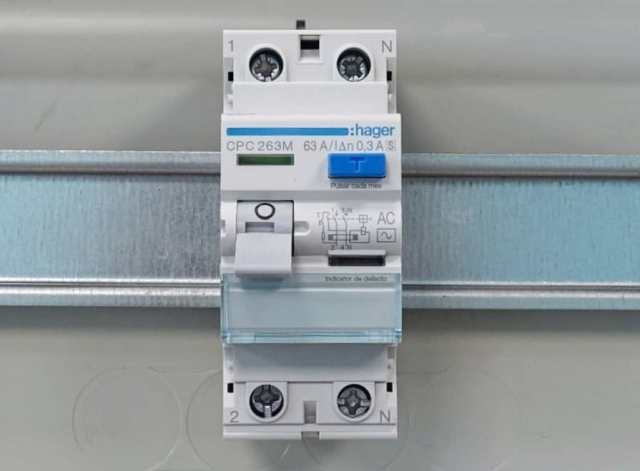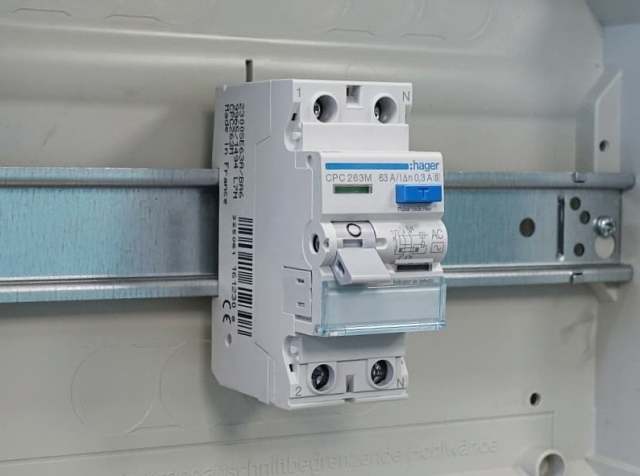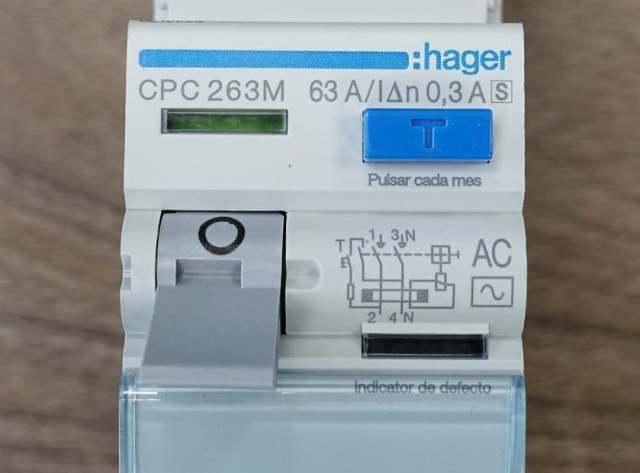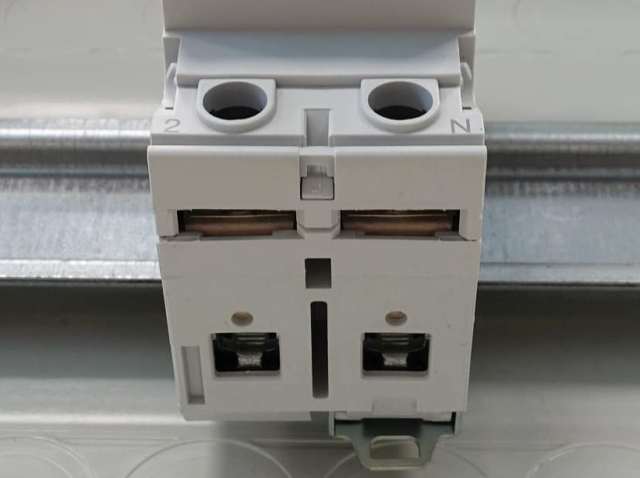Categories: Automata and RCD
Number of views: 4344
Comments on the article: 1
Main characteristics of RCD and difavtomatov
To begin with, we will understand the differences between RCDs from the difavtomat, because outwardly they are very similar, although they differ in their functions.
RCD - residual current device. It opens the circuit into which it is connected when a leakage current to the earth occurs, that is, at the moment when a differential current of a certain value begins to be present in the network, caused for example by damage to the wiring insulation or the contact of a living being with a current-carrying structure.
The bottom line is that a person can get an electric shock from the leakage current if he accidentally comes into contact with damaged equipment. In addition, the leakage current contributes to overheating of the wiring, which can lead to a fire. For this reason RCD used to protect wiring and people in the event of a leakage current, measured in milliamperes.

A differential circuit breaker, unlike an RCD, combines the functions of an RCD and a circuit breaker. That is, it is able to provide both wiring protection during short circuit and current overload, as well as protecting people from potentially dangerous leakage current.
If for the sake of experiment an overcurrent or a short circuit is created in the circuit, an RCD operating alone will not protect the wiring, and will simply burn with it. In order for the RCD to not burn out under these conditions, it is necessary to connect a circuit breaker in series with it. Then the RCD will protect against leakage, and the machine during overload.
And you can just take and put right away only difavtomatcontaining both a circuit breaker and an RCD. The circuit of the differential automaton will compare the current components of the forward and reverse branches of the circuit, and if a characteristic imbalance is detected, it will immediately turn off its suspicious section. Next, let's talk about the main characteristics of RCDs and difavtomatov.
Rated current
Difavtomat, combining the characteristics of an RCD and a circuit breaker, has the so-called "rated operating current" as the main parameter. This is the current at which the device is able to work normally for a long time, remaining connected to the protected circuit and not failing. This parameter is standardized, and can take only certain values from a number: 6, 10, 16, 25, 50, 63, etc. (amperes). The rated current is normalized both for RCDs and for difratomata.
Performance
In the designation of diflavtomats, the current performance indicator is used, which is indicated by the letter "B", "C" or "D", facing the figure of the rated current, as in conventional machines. Speed is an important time characteristic of a protective device.
So, the designation C16 reports that this differential circuit breaker has a rated current of 16 amperes and a speed of "C", that is, a shutdown during a short circuit will occur if the rated current of the circuit breaker is exceeded 5-10 times (at this value of the current characteristic, the thermal release will trip approximately after 1.5 seconds). “B” - if the current is exceeded 3-5 times, “D” - 10-20 times.
In apartments, they usually put “C” speed difavtomats, in rural areas it is customary to put “B”, in enterprises with powerful equipment and large starting currents - “D”.

Tripping current (leakage)
RCDs and differential machines have such a common characteristic for them as a differential indicator or setpoint for current leakage. In most cases, this value is from the range: 10, 30, 100, 300, or 500 mA. This characteristic is indicated by a triangle (the letter "delta"), standing in front of the corresponding number, indicating the value of the rated leakage current in milliamperes, at which the protection is activated.
Rated voltage
A mandatory operational characteristic of diflavomats and RCDs is the rated voltage (220 volts for single-phase circuits or 380 volts for three-phase circuits) - this is the typical voltage at which this device is able to function normally throughout its entire service life. The operating voltage of the device is indicated on its housing.
The form of leakage current of RCDs and diflavtomats in their markings may contain the designation "A", "AC" or "B", indicating that this protective device reacts to the leakage current of what form.
Automata labeled “A” react to the leakage of a sinusoidal (pulsating) alternating current. The marking "AC" indicates the possibility of a reaction to a constant component in the leakage current. The letter "B" indicates a combined design that provides a response to currents of both forms. A characteristic pattern is also present on the device’s case, which also indicates the type of RCD (or built-in RCD, if we are talking about difavtomat).

Selectivity
Like RCDs, difavtomats can assume a delay in operation (or a shutter speed delay), which characterizes the electrodynamic stability of the protective device. For example, the designation “G” indicates a delay in the region of 60 to 80 milliseconds, while the marking “S” limits the delay to a range of 200 to 300 milliseconds. Shut-off devices are used in complex protection circuits.
Other
The modular diagram of the device is usually shown on its front panel. Here you can see the main protective elements: electromagnetic release, thermal release, etc. The “test” button is designed to check the health of the device in manual mode.

Contacts
Protective devices designed for operation in single-phase circuits have two inputs and two outputs. Phase and zero terminals are connected respectively to the phase and neutral wires of the network. These contacts are marked as “L” phase and “N” zero. The input and output of the phase terminals can also be marked with the numbers "1" and "2".
On top of the device is connected to the phase and neutral wires coming from the input-distribution device or counter. From the bottom, conductors leading from the protective device are connected - to the protected load circuit.
Three-phase protective devices (RCD and difavtomaty) are included in a three-phase circuit (network) in a similar way, the phases are used: "A", "B" and "C". Terminals are designated as L1, L2, L3 and N.
The main characteristics of these devices should always be studied in advance by their markings, so that without any problems to choose the suitable option for your purpose, according to the required protection parameters.
I recommend to read more:
Which RCD to choose - criteria for the right choice
How to distinguish electronic RCD and electromechanical: features of the device and application
See also at i.electricianexp.com
:
